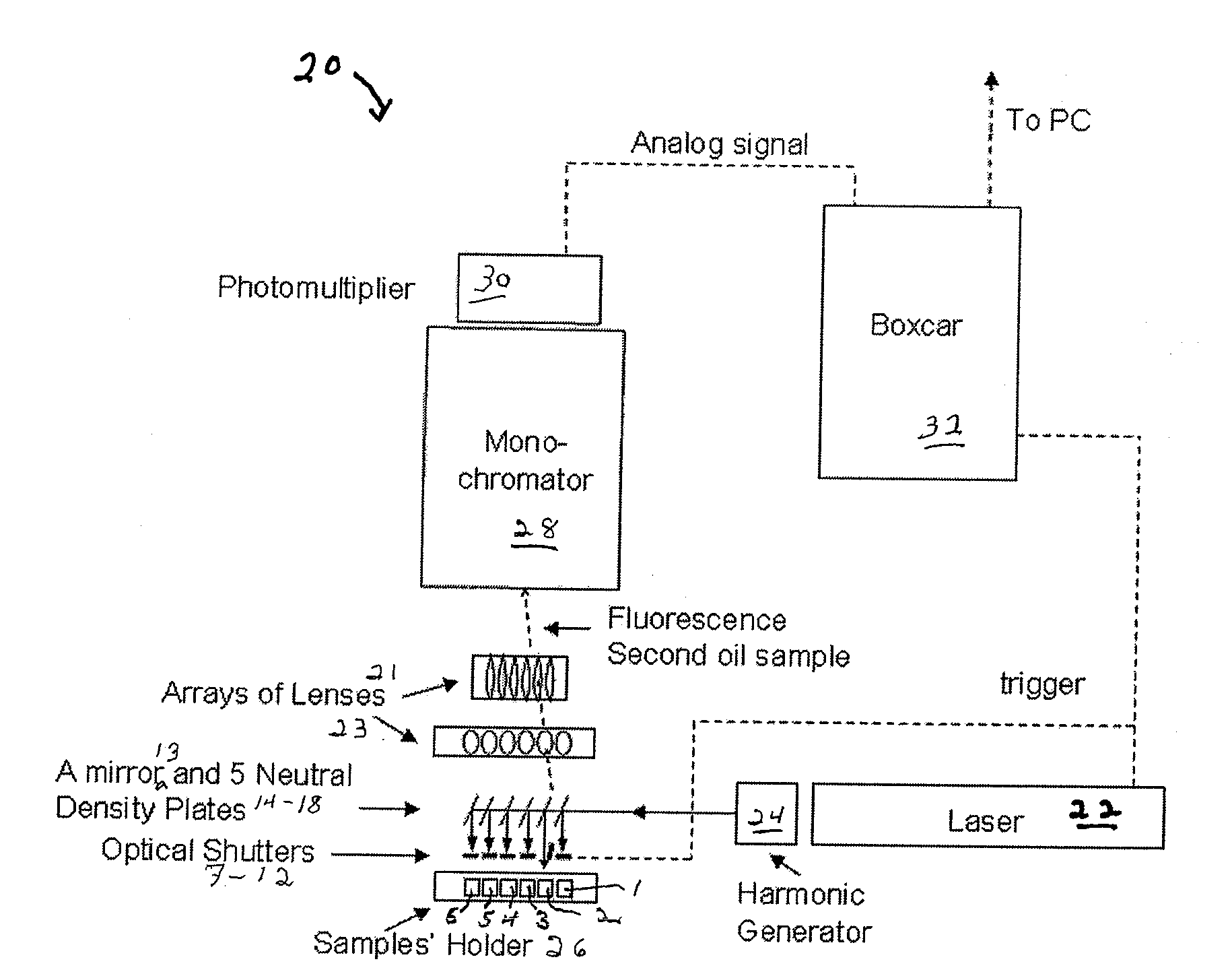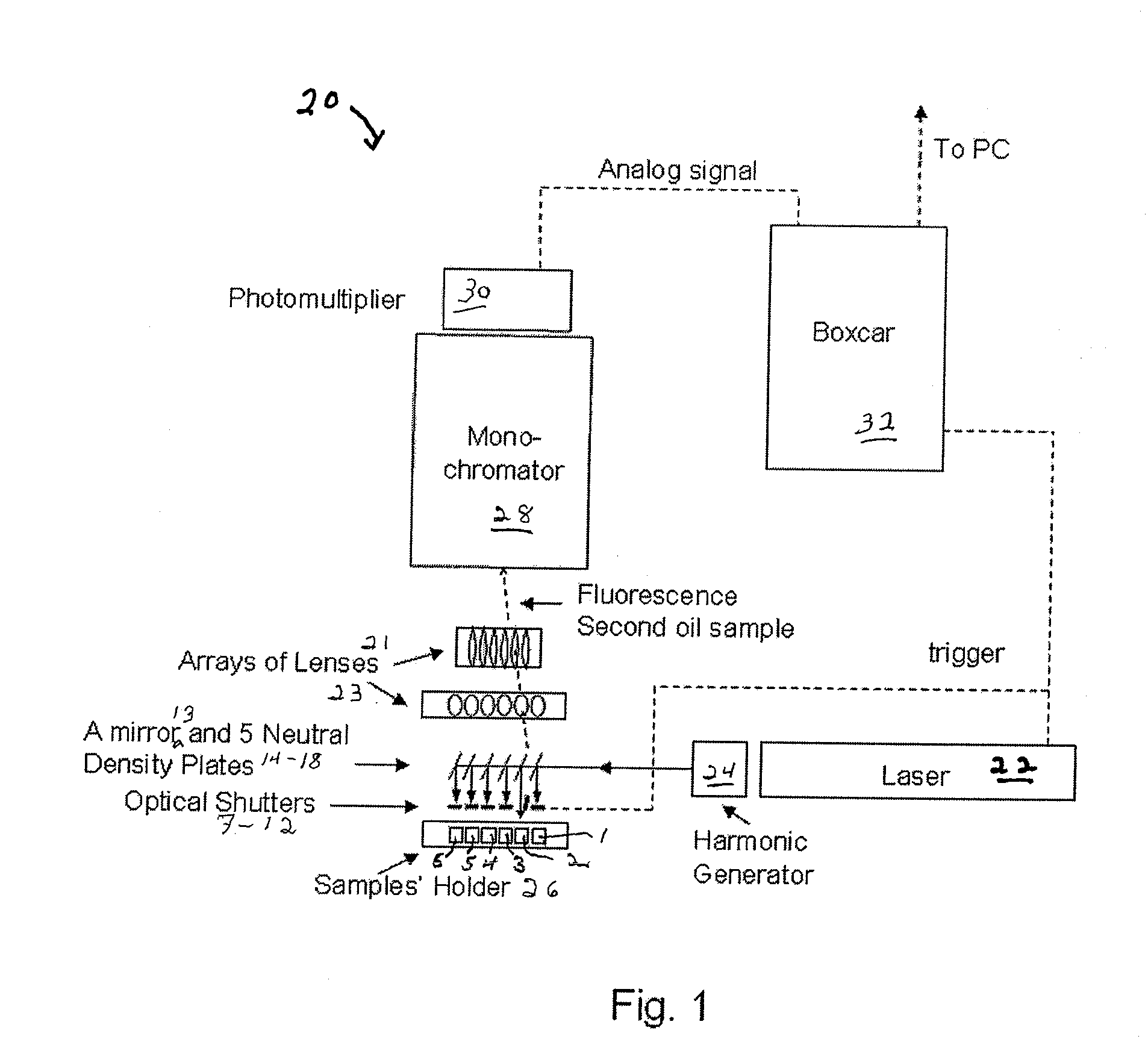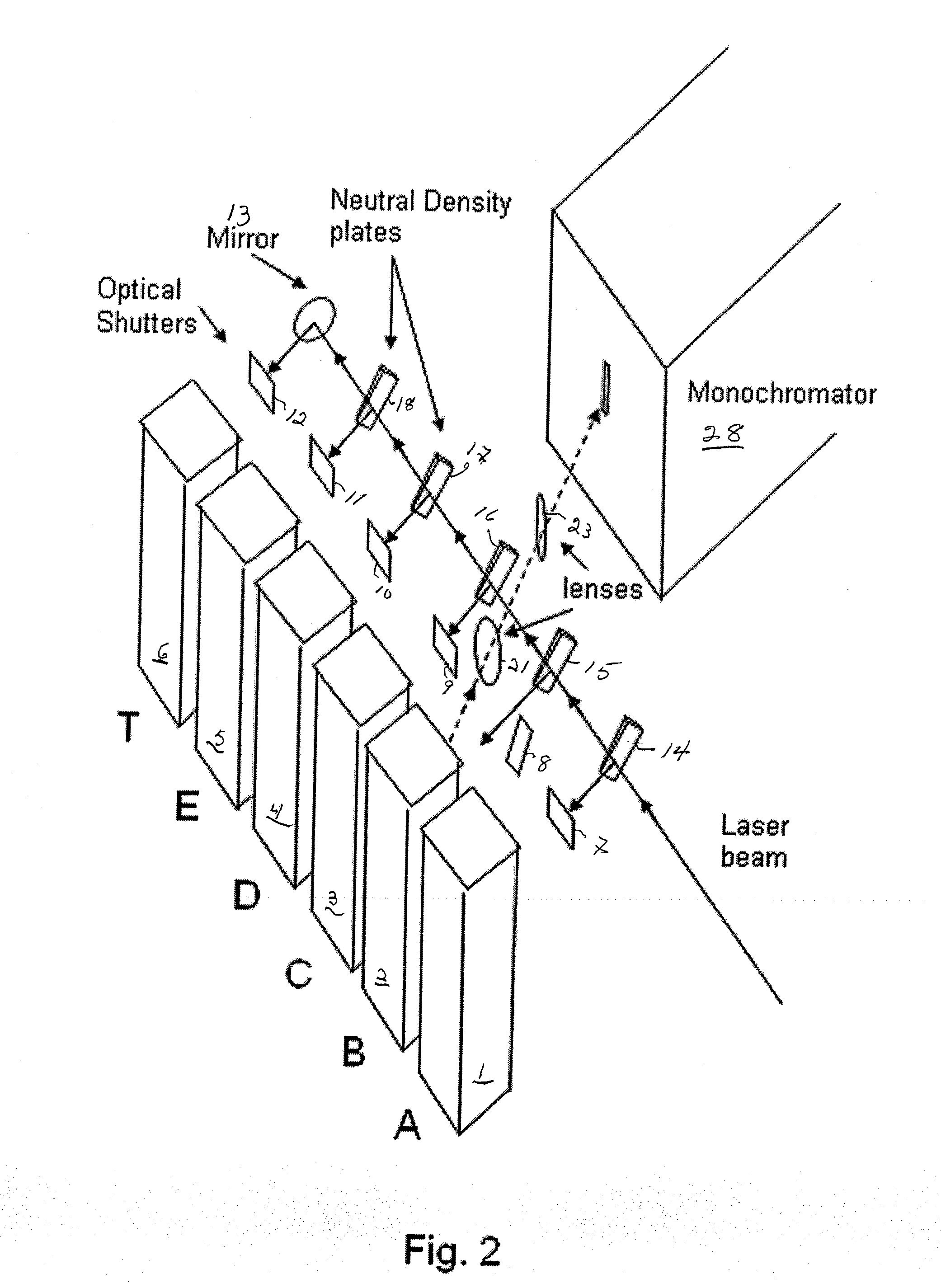Multiple fingerprinting of petroleum oils using normalized time-resolved laser-induced fluorescence spectral subtractions
a technology of time-resolved fluorescence and fingerprinting, which is applied in the field of spectroscopy, can solve the problem that the discrimination ability of this type of fingerprint is not enough to distinguish between neat crude oils, and achieve the effect of high distinguishing ability
- Summary
- Abstract
- Description
- Claims
- Application Information
AI Technical Summary
Benefits of technology
Problems solved by technology
Method used
Image
Examples
example 1
Sample and Data Analysis for Producing the Multiple Fingerprints of a Petroleum Oil Sample
[0053]This example shows the type of data that is generated and analyzed by the present invention towards producing the multiple fingerprints. The targeted oil sample chosen here is some weathered oil sample having originally an “Extra Light” grade, and the laser excitation wavelength was chosen to be 355 nm. FIG. 4 shows a sample plot of the data as acquired by the signal analyzer during one scan of the monochromator. The plot consists of groups of six successive points, each group of which is measured at a fixed wavelength setting of the monochromator, starting from 370 nm. The monochromator operated in the step mode with wavelength increment of 1.6 nm and time period of 6 s between increments. The six points in each group correspond to the six intensities of the resulting fluorescence at that particular wavelength setting. The intensities, however, are all time-resolved in the sense that onl...
example 2
Comparison between the Multiple Fingerprints of Weathered Petroleum Oils Having Originally Lighter Grades
[0060]When crude oils are spilled in seawater they weather out due to evaporation, sunlight radiation, dissolving of the water soluble compounds, and due to other chemical and biological reactions. These factors change the compositional characteristics of the oils and hence change also the laser-induced fluorescence emission fingerprints. The fingerprints of weathered crude oils having originally a light grade are found to gradually turn in shape into those of heavier grades. The present example considers the case of discriminating between weathered crude oils of originally “Extra Light” and “Light” grades, which have been in the weathering station for 14 days. The multiple fingerprints that have already been shown in FIG. 7A through FIG. 7E are actually for the weathered “Extra Light” oil. The multiple fingerprints of the weathered “Light” oil, on the other hand, are presented i...
example 3
Comparison between the Multiple Fingerprints of Weathered Petroleum Oils Having Originally Heavier Grades
[0062]In this example multiple fingerprints of weathered oils having originally “Medium” and “Heavy” grades are presented. The “Medium” oil was weathered for 14 days while the “Heavy” oil was weathered for 7 days. The single fingerprints of the two oils, i.e., the fingerprints produced by the technique of the previous invention, are shown in FIGS. 9F and 10F for the medium and heavy oils, respectively. The two oils can be somehow distinguished from each other in these fingerprints, but because the patterns in the 370 nm-450 nm region are similar in both fingerprints the oils could be mistakenly identified as originally having the same grade. However, a comparison between the multiple fingerprints of the two oils, which are shown in FIG. 9A through FIG. 9E for the medium grade, and in FIG. 10A through FIG. 10E for the heavy grade, show that the oils do originate from two different...
PUM
 Login to View More
Login to View More Abstract
Description
Claims
Application Information
 Login to View More
Login to View More - R&D
- Intellectual Property
- Life Sciences
- Materials
- Tech Scout
- Unparalleled Data Quality
- Higher Quality Content
- 60% Fewer Hallucinations
Browse by: Latest US Patents, China's latest patents, Technical Efficacy Thesaurus, Application Domain, Technology Topic, Popular Technical Reports.
© 2025 PatSnap. All rights reserved.Legal|Privacy policy|Modern Slavery Act Transparency Statement|Sitemap|About US| Contact US: help@patsnap.com



